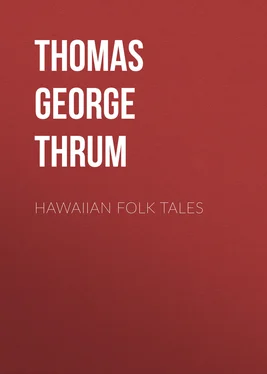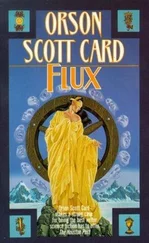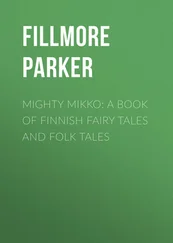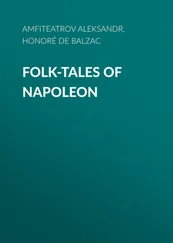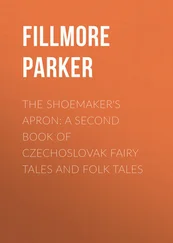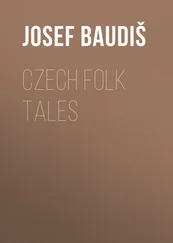Thomas George Thrum - Hawaiian Folk Tales
Здесь есть возможность читать онлайн «Thomas George Thrum - Hawaiian Folk Tales» — ознакомительный отрывок электронной книги совершенно бесплатно, а после прочтения отрывка купить полную версию. В некоторых случаях можно слушать аудио, скачать через торрент в формате fb2 и присутствует краткое содержание. Жанр: Старинная литература, foreign_antique, Сказка, на английском языке. Описание произведения, (предисловие) а так же отзывы посетителей доступны на портале библиотеки ЛибКат.
- Название:Hawaiian Folk Tales
- Автор:
- Жанр:
- Год:неизвестен
- ISBN:нет данных
- Рейтинг книги:4 / 5. Голосов: 1
-
Избранное:Добавить в избранное
- Отзывы:
-
Ваша оценка:
- 80
- 1
- 2
- 3
- 4
- 5
Hawaiian Folk Tales: краткое содержание, описание и аннотация
Предлагаем к чтению аннотацию, описание, краткое содержание или предисловие (зависит от того, что написал сам автор книги «Hawaiian Folk Tales»). Если вы не нашли необходимую информацию о книге — напишите в комментариях, мы постараемся отыскать её.
Hawaiian Folk Tales — читать онлайн ознакомительный отрывок
Ниже представлен текст книги, разбитый по страницам. Система сохранения места последней прочитанной страницы, позволяет с удобством читать онлайн бесплатно книгу «Hawaiian Folk Tales», без необходимости каждый раз заново искать на чём Вы остановились. Поставьте закладку, и сможете в любой момент перейти на страницу, на которой закончили чтение.
Интервал:
Закладка:
“There are these different Hawaiian genealogies, going back with more or less agreement among themselves to the first created man. The genealogy of Kumuhonua gives thirteen generations inclusive to Nuu, or Kahinalii, or the line of Laka, the oldest son of Kumuhonua. (The line of Seth from Adam to Noah counts ten generations.) The second genealogy, called that of Kumu-uli, was of greatest authority among the highest chiefs down to the latest times, and it was taboo to teach it to the common people. This genealogy counts fourteen generations from Huli-houna, the first man, to Nuu, or Nana-nuu, but inclusive, on the line of Laka. The third genealogy, which, properly speaking, is that of Paao, the high-priest who came with Pili from Tahiti, about twenty-five generations ago, and was a reformer of the Hawaiian priesthood, and among whose descendants it has been preserved, counts only twelve generations from Kumuhonua to Nuu, on the line of Kapili, youngest son of Kumuhonua.”
“In the Hawaiian group there are several legends of the Flood. One legend relates that in the time of Nuu, or Nana-nuu (also pronounced lana, that is, floating), the flood, Kaiakahinalii, came upon the earth, and destroyed all living beings; that Nuu, by command of his god, built a large vessel with a house on top of it, which was called and is referred to in chants as ‘He waa halau Alii o ka Moku,’ the royal vessel, in which he and his family, consisting of his wife, Lilinoe, his three sons and their wives, were saved. When the flood subsided, Kane, Ku, and Lono entered the waa halau of Nuu, and told him to go out. He did so, and found himself on the top of Mauna Kea (the highest mountain on the island of Hawaii). He called a cave there after the name of his wife, and the cave remains there to this day—as the legend says in testimony of the fact. Other versions of the legend say that Nuu landed and dwelt in Kahiki-honua-kele, a large and extensive country.” … “Nuu left the vessel in the evening of the day and took with him a pig, cocoanuts, and awa as an offering to the god Kane. As he looked up he saw the moon in the sky. He thought it was the god, saying to himself, ‘You are Kane, no doubt, though you have transformed yourself to my sight.’ So he worshipped the moon, and offered his offerings. Then Kane descended on the rainbow and spoke reprovingly to Nuu, but on account of the mistake Nuu escaped punishment, having asked pardon of Kane.” … “Nuu’s three sons were Nalu-akea, Nalu-hoo-hua, and Nalu-mana-mana. In the tenth generation from Nuu arose Lua-nuu, or the second Nuu, known also in the legend as Kane-hoa-lani, Kupule, and other names. The legend adds that by command of his god he was the first to introduce circumcision to be practised among his descendants. He left his native home and moved a long way off until he reached a land called Honua-ilalo, ‘the southern country.’ Hence he got the name Lalo-kona, and his wife was called Honua-po-ilalo. He was the father of Ku-nawao by his slave-woman Ahu (O-ahu) and of Kalani-menehune by his wife, Mee-hewa. Another says that the god Kane ordered Lua-nuu to go up on a mountain and perform a sacrifice there. Lua-nuu looked among the mountains of Kahiki-ku, but none of them appeared suitable for the purpose. Then Lua-nuu inquired of God where he might find a proper place. God replied to him: ‘Go travel to the eastward, and where you find a sharp-peaked hill projecting precipitously into the ocean, that is the hill for the sacrifice.’ Then Lua-nuu and his son, Kupulu-pulu-a-Nuu, and his servant, Pili-lua-nuu, started off in their boat to the eastward. In remembrance of this event the Hawaiians called the back of Kualoa Koo-lau; Oahu (after one of Lua-nuu’s names), Kane-hoa-lani; and the smaller hills in front of it were named Kupu-pulu and Pili-lua-nuu. Lua-nuu is the tenth descendant from Nuu by both the oldest and the youngest of Nuu’s sons. This oldest son is represented to have been the progenitor of the Kanaka-maoli, the people living on the mainland of Kane (Aina kumupuaa a Kane): the youngest was the progenitor of the white people (ka poe keo keo maoli). This Lua-nuu (like Abraham, the tenth from Noah, also like Abraham), through his grandson, Kini-lau-a-mano, became the ancestor of the twelve children of the latter, and the original founder of the Menehune people, from whom this legend makes the Polynesian family descend.”
The Rev. Sheldon Dibble, in his history of the Sandwich Islands, published at Lahainaluna, in 1843, gives a tradition which very much resembles the history of Joseph. “Waikelenuiaiku was one of ten brethren who had one sister. They were all the children of one father, whose name was Waiku. Waikelenuiaiku was much beloved by his father, but his brethren hated him. On account of their hatred they carried him and cast him into a pit belonging to Holonaeole. The oldest brother had pity on him, and gave charge to Holonaeole to take good care of him. Waikelenuiaiku escaped and fled to a country over which reigned a king whose name was Kamohoalii. There he was thrown into a dark place, a pit under ground, in which many persons were confined for various crimes. Whilst confined in this dark place he told his companions to dream dreams and tell them to him. The night following four of the prisoners had dreams. The first dreamed that he saw a ripe ohia (native apple), and his spirit ate it; the second dreamed that he saw a ripe banana, and his spirit ate it; the third dreamed that he saw a hog, and his spirit ate it; and the fourth dreamed that he saw awa, pressed out the juice, and his spirit drank it. The first three dreams, pertaining to food, Waikelenuiaiku interpreted unfavorably, and told the dreamers they must prepare to die. The fourth dream, pertaining to drink, he interpreted to signify deliverance and life. The first three dreamers were slain according to the interpretation, and the fourth was delivered and saved. Afterward this last dreamer told Kamohoalii, the king of the land, how wonderful was the skill of Waikelenuiaiku in interpreting dreams, and the king sent and delivered him from prison and made him a principal chief in his kingdom.”
Читать дальшеИнтервал:
Закладка:
Похожие книги на «Hawaiian Folk Tales»
Представляем Вашему вниманию похожие книги на «Hawaiian Folk Tales» списком для выбора. Мы отобрали схожую по названию и смыслу литературу в надежде предоставить читателям больше вариантов отыскать новые, интересные, ещё непрочитанные произведения.
Обсуждение, отзывы о книге «Hawaiian Folk Tales» и просто собственные мнения читателей. Оставьте ваши комментарии, напишите, что Вы думаете о произведении, его смысле или главных героях. Укажите что конкретно понравилось, а что нет, и почему Вы так считаете.
